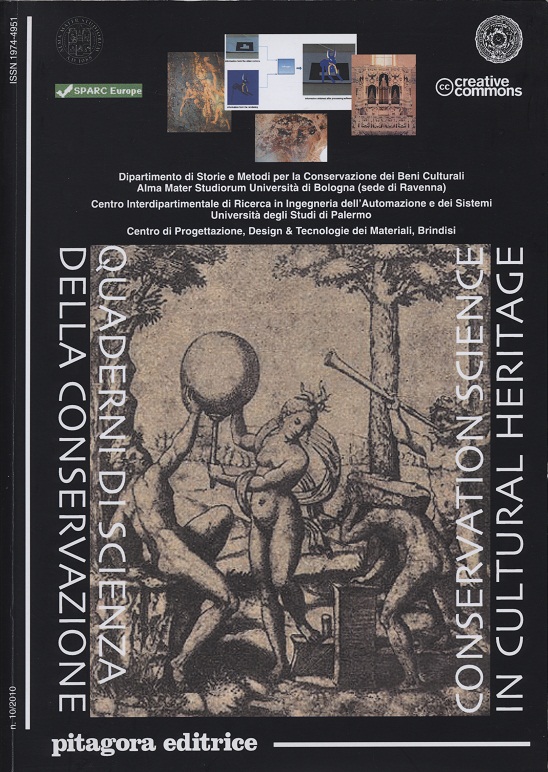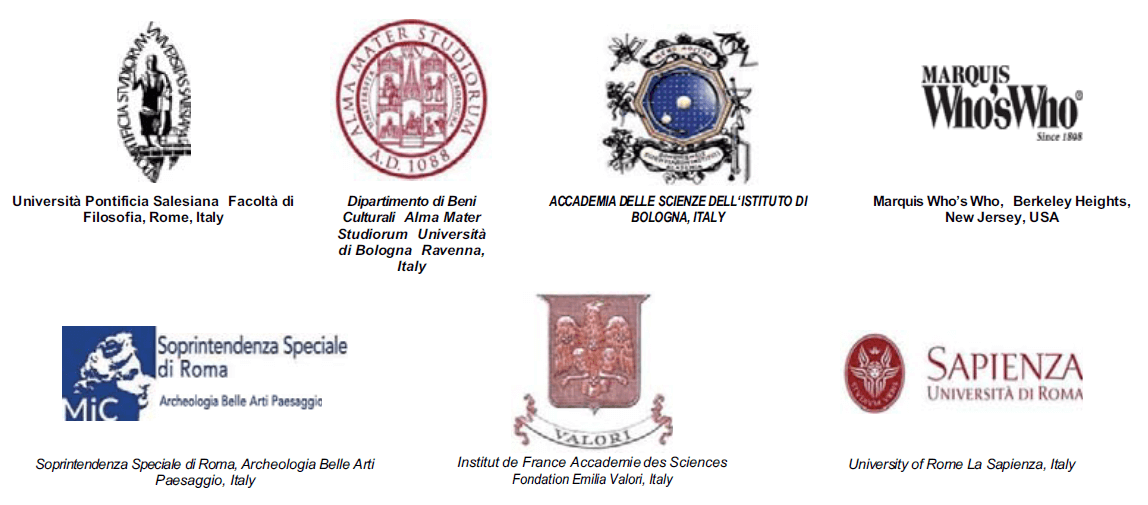Microscopy and Molecular Biology Techniques for the Study of Biocenosis Diversity in Semi-Confined Environments
DOI:
https://doi.org/10.6092/issn.1973-9494/2324Keywords:
biocenosis, cave environment, CLS microscopy, molecular analysesAbstract
This study is part of a wider conservation project of artistic and anthropological finds located in the Grotto of the Saints (Licodia Eubea, Alia, Sicily), and represents an opportunity for investigating the micro-and macro biological systems colonizing this particular environment. It is well-known that the bio-receptivity of surfaces is strongly related to its constituent materials and environmental parameters, whose effects promote the establishment of specific biotic communities. This is particularly true for caves, hypogea and semi-confined environments and, in particular for the Grotto of the Saints, where besides the presence of different nutrient sources, there are also high humidity values, percolating water and an aerobiological exchange with the surrounding countryside. Moreover, the weathering of this structure is enhanced by the canyon effect of the wind and the day-night temperature range. The identification and characterization of the biocenosis present in this environment was performed combining microscopy (optical, fluorescent, CLSM) and molecular biology analysis (DNA sequences). The aim was to identify the biological systems able to trigger the degradation processes, in order to plan their growth control and to prevent the colonization of the entire environment.Downloads
Published
2010-12-31
How to Cite
Palla, F., Billeci, N., Mancuso, F. P., Pellegrino, L., & Lorusso, L. C. (2010). Microscopy and Molecular Biology Techniques for the Study of Biocenosis Diversity in Semi-Confined Environments. Conservation Science in Cultural Heritage, 10(1), 185–194. https://doi.org/10.6092/issn.1973-9494/2324
Issue
Section
Articles
License
Copyright (c) 2010 Franco Palla, Noemi Billeci, Francesco Paolo Mancuso, Lorella Pellegrino, Lucia Cecilia Lorusso
Copyrights and publishing rights of all the texts on this journal belong to the respective authors without restrictions. Authors grant the journal right of first publication.
This journal is licensed under a Creative Commons Attribution 4.0 International License (full legal code).
See also our Open Access Policy.






